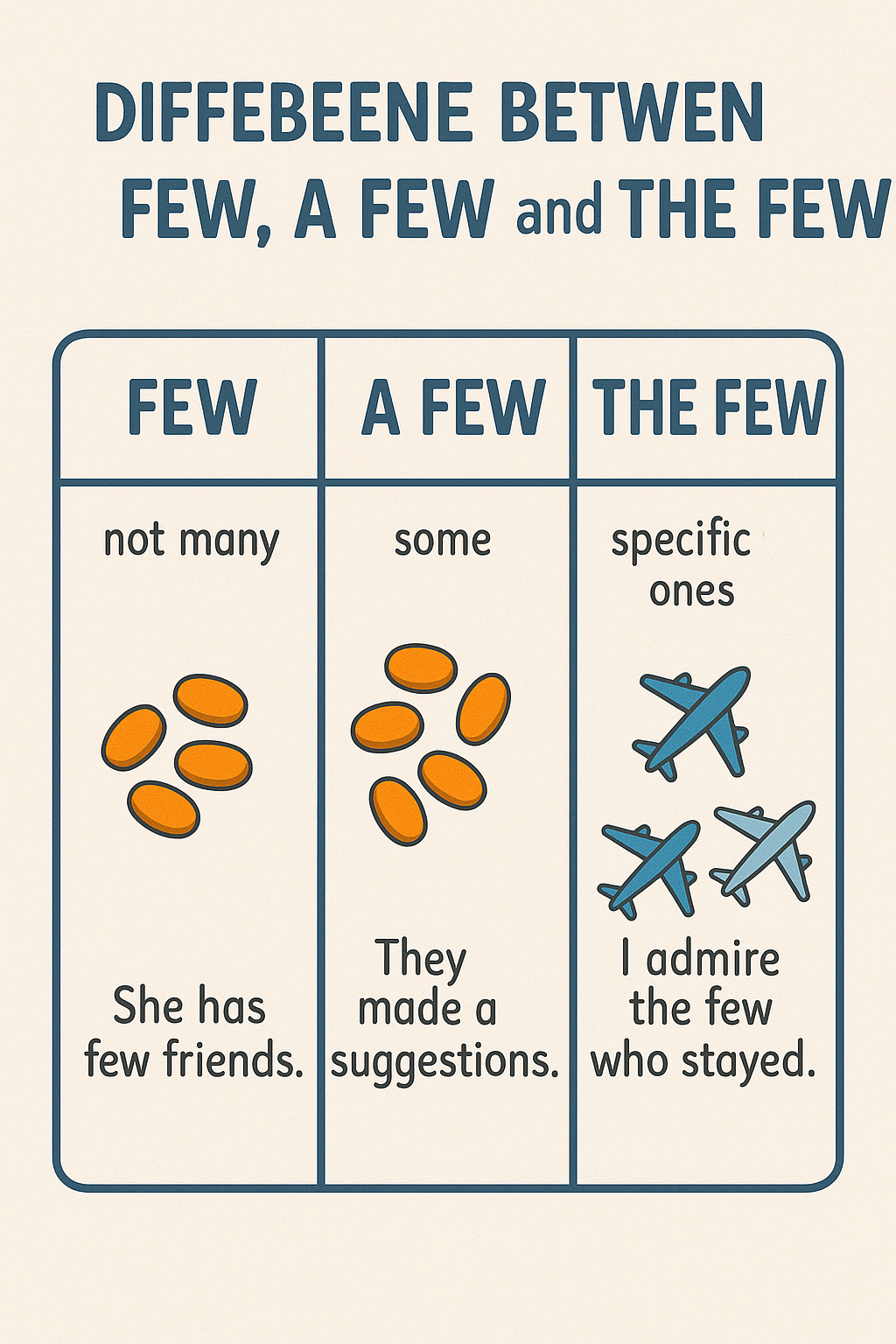Difference Between Few, A Few, and The Few-Grammar Puzzle Solved (34)
Understanding the difference between few, a few, and the few is essential for anyone aiming to write or speak English with clarity. Although these terms may look similar, their meanings are quite different. All three are used with countable nouns, and knowing when to use each can help you express your ideas more precisely. Therefore, learning their correct usage will make your communication smoother and more accurate.

“Few” Means Almost None
The word “few” shows a very small number of something, often with a negative feeling. It implies that the number is not enough or is disappointing. For example, if you say “Few students passed the exam,” you suggest that most students did not succeed. Furthermore, “few” creates a sense of scarcity or concern.
Examples:
Few people attended the meeting.
He has few friends in the city.
In both cases, the speaker highlights a shortfall or expresses regret. Thus, “few” reflects insufficiency.
“A Few” Means Some, and That’s Good
In contrast, “a few” means a small number, but in a positive way. It shows that at least there is something, and it may even be enough. Unlike “few,” this phrase carries a more hopeful tone.
Examples:
A few guests have arrived.
She has a few books on that topic.
Clearly, “a few” means not many, but still some — and possibly just enough. Therefore, when the number feels acceptable, “a few” is the better choice.
“The Few” Refers to a Specific Group
Meanwhile, “the few” refers to a known small group, often with special qualities or shared identity. It points to specific people or things already mentioned or easily understood from context.
Examples:
The few employees who stayed worked overtime.
We rely on the few experts in this field.
In these examples, the phrase refers to a defined, recognized group. As a result, “the few” adds a tone of respect or focus.
Conclusion
To sum up, mastering few, a few, and the few can improve your accuracy and tone. Use “few” when the number is not enough. Choose “a few” when it’s a small but welcome quantity. Say “the few” when talking about a specific group. Therefore, by observing these small distinctions, your English will become more precise and expressive. Keep practicing, and you’ll notice how each phrase subtly changes the meaning of your message.
The Character of The Miller in The Prologue:
https://englishlitnotes.com/2025/05/29/the-character-of-the-miller/
Edward Taylor as a Poet: https://americanlit.englishlitnotes.com/edward-taylor-as-a-poet/
Difference Between Few and Little:
https://grammarpuzzlesolved.englishlitnotes.com/difference-between-few-and-little/
An Honest Woodcutter: https://englishwithnaeemullahbutt.com/2025/05/10/an-honest-woodcutter/
For English and American literature and grammar, visit Google: https://www.google.com
Discover more from Grammar Puzzle Solved by Naeem Ullah Butt
Subscribe to get the latest posts sent to your email.